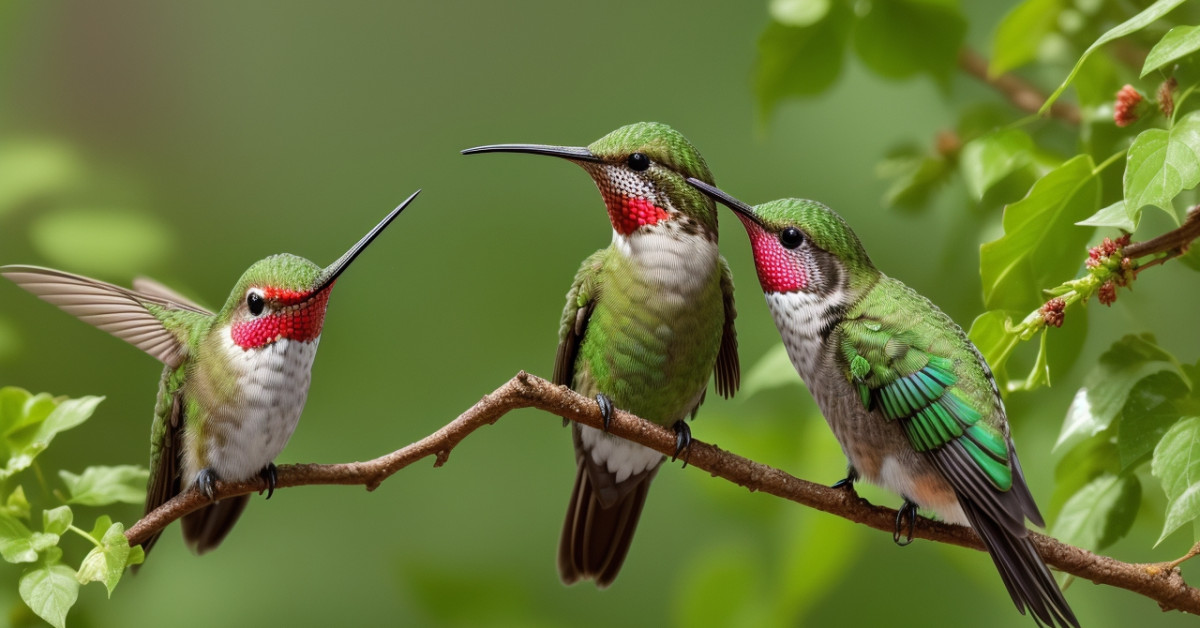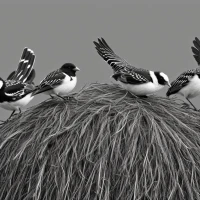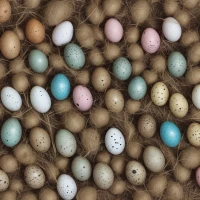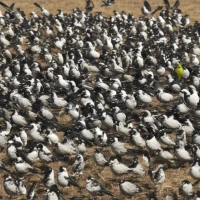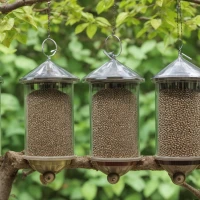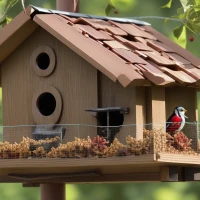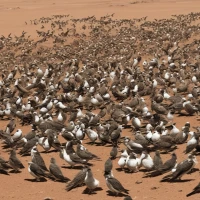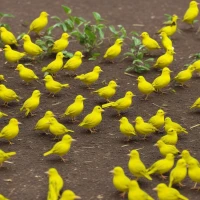21 Frequently Asked Questions About Feeding Hummingbirds Explained and Answered - Have you ever wondered how to attract those mesmerizing hummingbirds to your garden, or if the nectar you’re offering is just right? You’re not alone! Dive into our ultimate guide that demystifies the secrets of feeding these tiny avian wonders. From the best feeder placements to the perfect nectar recipes, we cover all your burning questions and more. Ready to transform your backyard into a hummingbird haven? Let’s get started!
Questions About Feeding Hummingbirds
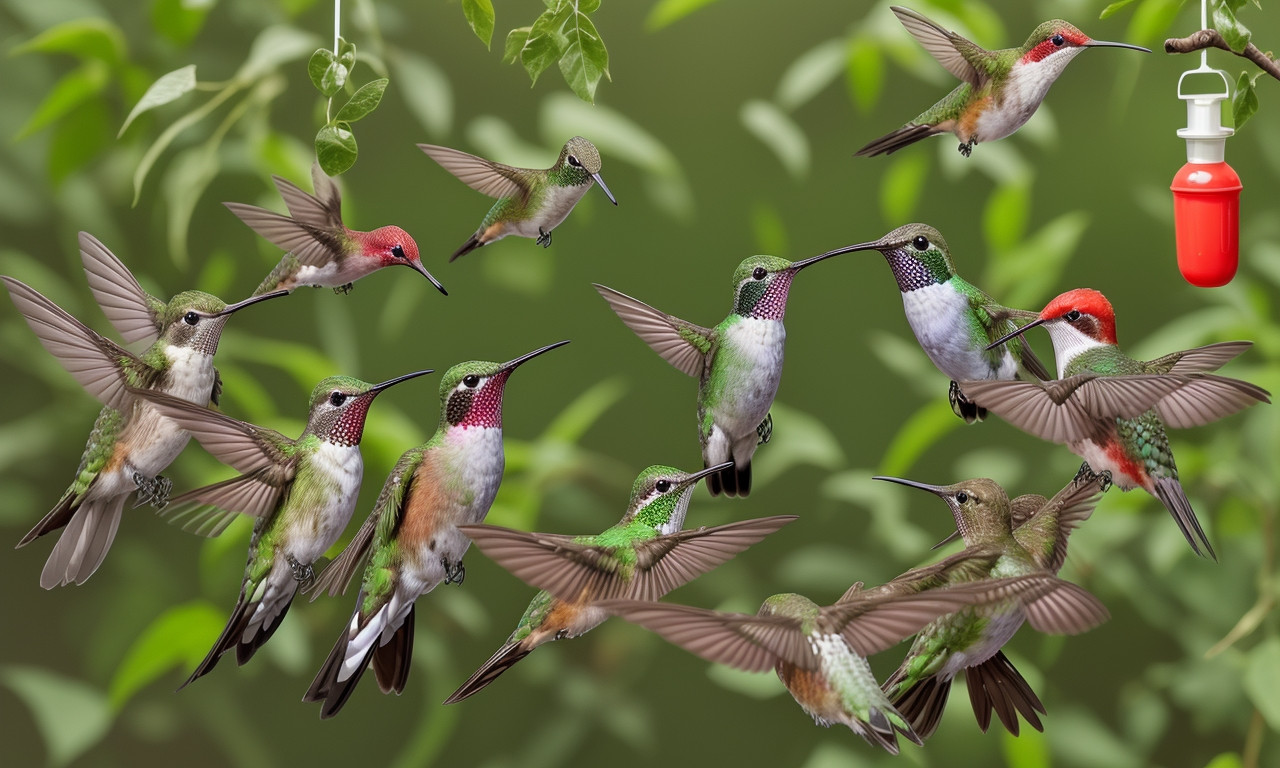
Curious about feeding hummingbirds? This comprehensive guide, “21 Frequently Asked Questions About Feeding Hummingbirds Explained and Answered,” dives deep into the most common questions about feeding hummingbirds to help you better understand these remarkable creatures. From understanding the best types of feeders to choosing the right nectar recipes, this guide covers it all.
Discover why certain feeder designs attract more hummingbirds, and learn the importance of regular cleaning to prevent the spread of harmful bacteria. Should you use red dye in your nectar? This guide addresses popular myths and provides clear answers backed by research. You’ll also find advice on where to place feeders for maximum visibility, both for the birds and for your viewing pleasure.
Wondering when to start feeding hummingbirds in your region? The guide breaks down migration patterns and seasonal behaviors, ensuring your feeders are available when hummingbirds need them most. You’ll even get tips on how to keep ants and bees away from your feeders without harming the birds.
Whether you’re a seasoned birdwatcher or new to the world of hummingbirds, these frequently asked questions about feeding hummingbirds will provide invaluable insights to enhance your experience and ensure the well-being of these delightful visitors in your garden.
What’s the Recipe for Sugar Water to Feed Hummingbirds?
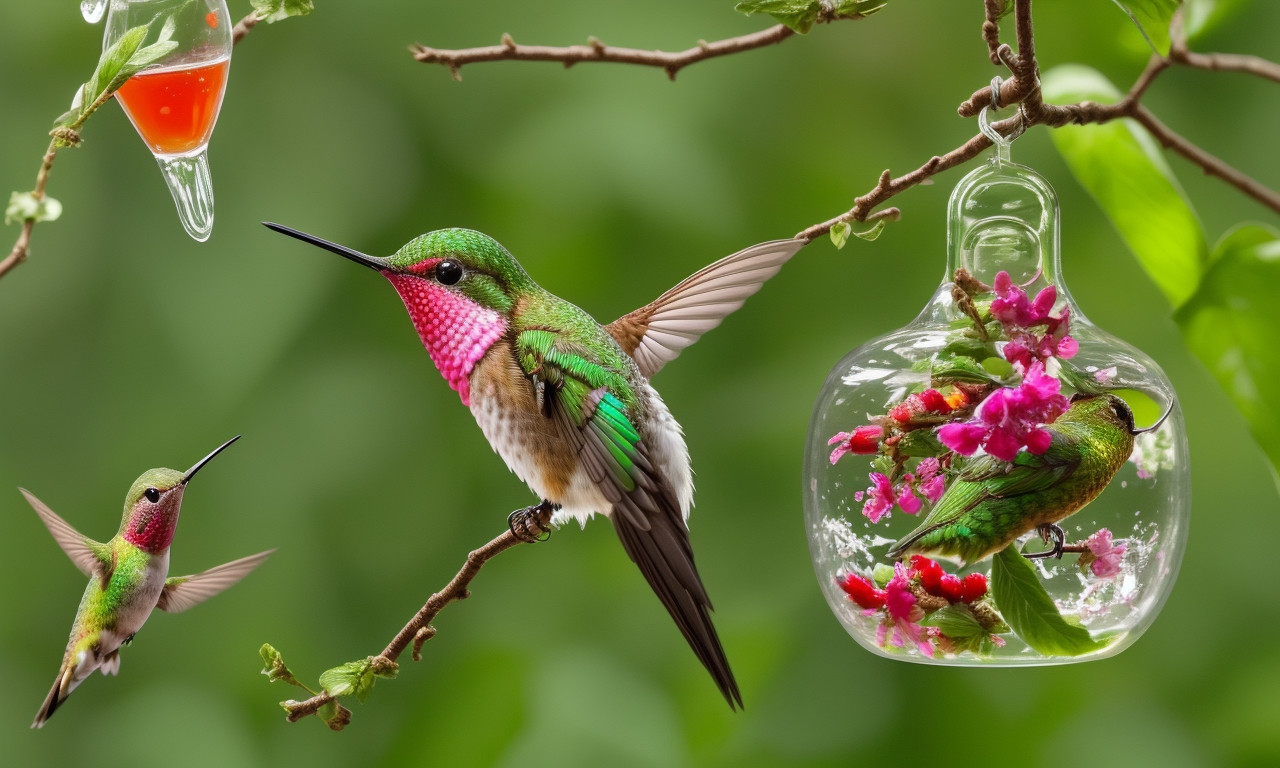
Feeding hummingbirds can be a deeply rewarding experience, especially when you see these vibrant creatures flocking to your feeders. One common question asked by enthusiasts is, “What’s the Recipe for Sugar Water to Feed Hummingbirds?” This recipe forms the cornerstone of feeding hummingbirds. It’s quite straightforward: mix one part white granulated sugar with four parts water. Boil the mixture for a couple of minutes to ensure the sugar dissolves entirely and any potential contaminants are neutralized. Allow the solution to cool before filling your feeders.
Understanding the precise ratio of sugar to water is crucial because it mimics the natural nectar found in flowers, providing the essential energy hummingbirds need. Never add red dye or use honey, as these can harm the birds. Store any leftover sugar water in the refrigerator to maintain its freshness. Additionally, remember to clean your feeders regularly to prevent mold and bacteria build-up. By following these guidelines, you ensure that your garden remains a safe and attractive haven for hummingbirds. The simplicity of this sugar water recipe underscores its effectiveness, making it a key aspect of supporting these magnificent creatures.
Should I Add Red Food Coloring to the Mixture?
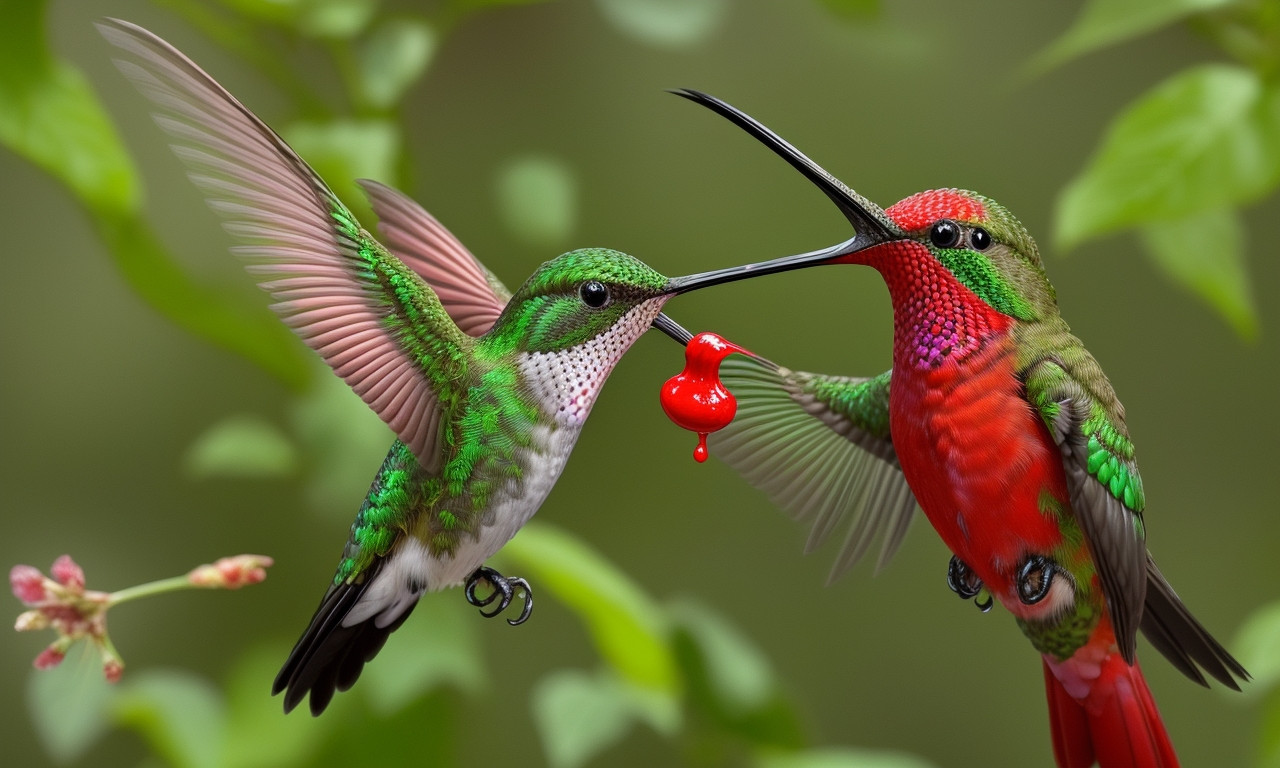
Hummingbirds captivate nature enthusiasts with their vibrant colors and rapid wing movements, and providing the right food for them is a key part of inviting these birds to your garden. “21 Frequently Asked Questions About Feeding Hummingbirds Explained and Answered” delves into the intricate details of what you should know when setting up a hummingbird feeder. One critical question often raised is: “Should I Add Red Food Coloring to the Mixture?”
Hummingbirds are naturally attracted to the color red, but experts recommend against adding red food coloring to the sugar-water mixture. Research indicates that these artificial dyes can be harmful, potentially causing liver and kidney damage to the birds. Instead, focus on using feeders that already incorporate red in their design to draw the attention of hummingbirds without the risks associated with food coloring.
In this comprehensive guide, you will find enriching answers on topics like the ideal sugar-to-water ratio, the best placement for feeders, and how to properly maintain and clean them to prevent mold and bacterial growth. This ensures a safe and nutritious feeding environment for hummingbirds, promoting their health and making your garden a lively spot filled with their delightful presence.
Is Organic Sugar Better for Hummingbird Feeders?
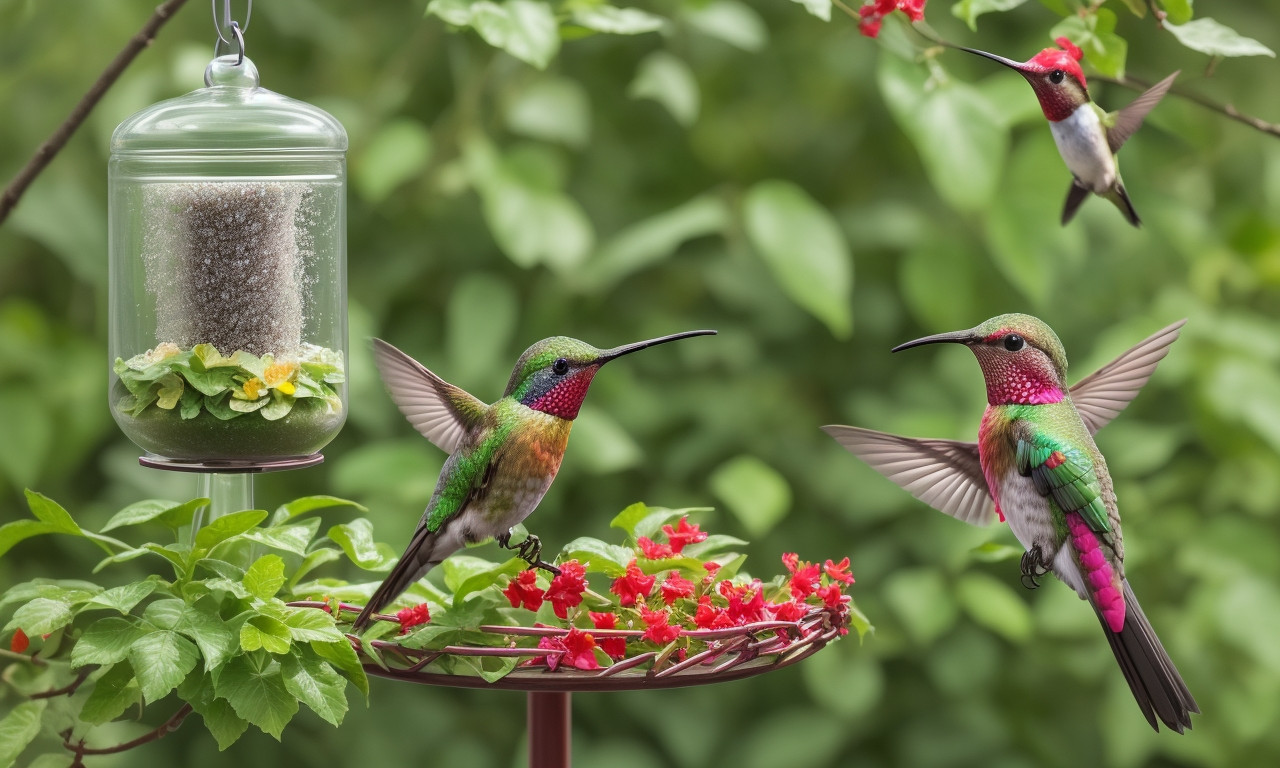
Feeding hummingbirds can be a joyful endeavor, but it also comes with numerous questions to ensure the well-being of these delicate creatures. In our comprehensive guide, “21 Frequently Asked Questions About Feeding Hummingbirds Explained and Answered,” we tackle various aspects of this delightful task, offering insights into the best practices for attracting and maintaining the health of hummingbirds.
One of the most common queries is: Is Organic Sugar Better for Hummingbird Feeders? While many bird enthusiasts lean towards organic options for their eco-friendly benefits, it’s essential to understand how this choice impacts hummingbirds. Organic sugar is essentially the same as regular granulated sugar once it’s dissolved in water, carrying the same nutritional value. However, organic sugar can sometimes contain additional trace elements and impurities that may be harmless to humans but could potentially affect the tiny bodies of hummingbirds.
Using pure white cane sugar, dissolved in a four-to-one ratio of water to sugar, is recommended to mimic the natural nectar found in flowers. Ensuring the feeder is regularly cleaned and refilled with fresh solution is also crucial. Our guide addresses more of such nuanced inquiries, helping you to create a safe and nutritious feeding environment for these mesmerizing birds. Every question, from types of feeders to the best sugar-water ratios, is answered to help you get the most out of your hummingbird-feeding experience.
How Can I Prevent Mold Growth in Hummingbird Feeders?

Hummingbirds captivate many bird enthusiasts, and ensuring they receive proper nutrition is essential. One of the most frequently addressed concerns is, “How can I prevent mold growth in hummingbird feeders?” Mold can be harmful to these delicate creatures, so taking steps to prevent it is crucial. Cleanliness is paramount; wash the feeder thoroughly at least twice a week with a mixture of hot water and white vinegar or a mild bleach solution. Rinse carefully to ensure no chemical residue is left behind.
Another effective method to prevent mold growth is to change the nectar frequently, ideally every two to three days, especially in hot weather. Using a feeder with a wide-mouth design can make cleaning easier and more effective. Positioning the feeder in a shaded area will also help minimize mold growth, as direct sunlight accelerates fermentation and mold development.
Fill the feeder with just enough nectar to last a couple of days to avoid waste and spoilage. Finally, consider using an ant moat or a bee guard to keep pests away, which can also contribute to mold issues. By staying vigilant and maintaining a clean environment, you can create a safe and inviting feeding station for hummingbirds, ensuring their health and well-being.
What Are the Best Feeders for Hummingbirds?

Hummingbirds captivate bird enthusiasts with their vibrant plumage and acrobatic flight. Understanding the nuances of feeding these tiny marvels can enhance your birdwatching experience. Among the 21 frequently asked questions about feeding hummingbirds, a common query is: What are the best feeders for hummingbirds? The ideal feeders should have several key features: bright colors to attract the birds, typically red; multiple feeding ports to accommodate several hummingbirds at once; and easy-to-clean components to ensure sanitation, as dirty feeders can harm these delicate birds.
Glass and plastic feeders are both popular, but each has its merits. Glass feeders are durable and typically easier to clean, while plastic feeders are lightweight and less prone to breakage. Port design is crucial too; flowershaped ports not only attract hummingbirds but also help keep out insects like bees and ants. Some feeders come equipped with ant moats or bee guards, offering additional protection.
Another factor is capacity. Smaller feeders are suitable for those with fewer hummingbird visitors, reducing the risk of nectar spoilage. For avid birdwatchers with numerous visitors, larger feeders can save time on refills. Observing these considerations will help create an inviting and safe haven for hummingbirds in your garden.
When Should I Hang My Hummingbird Feeders?
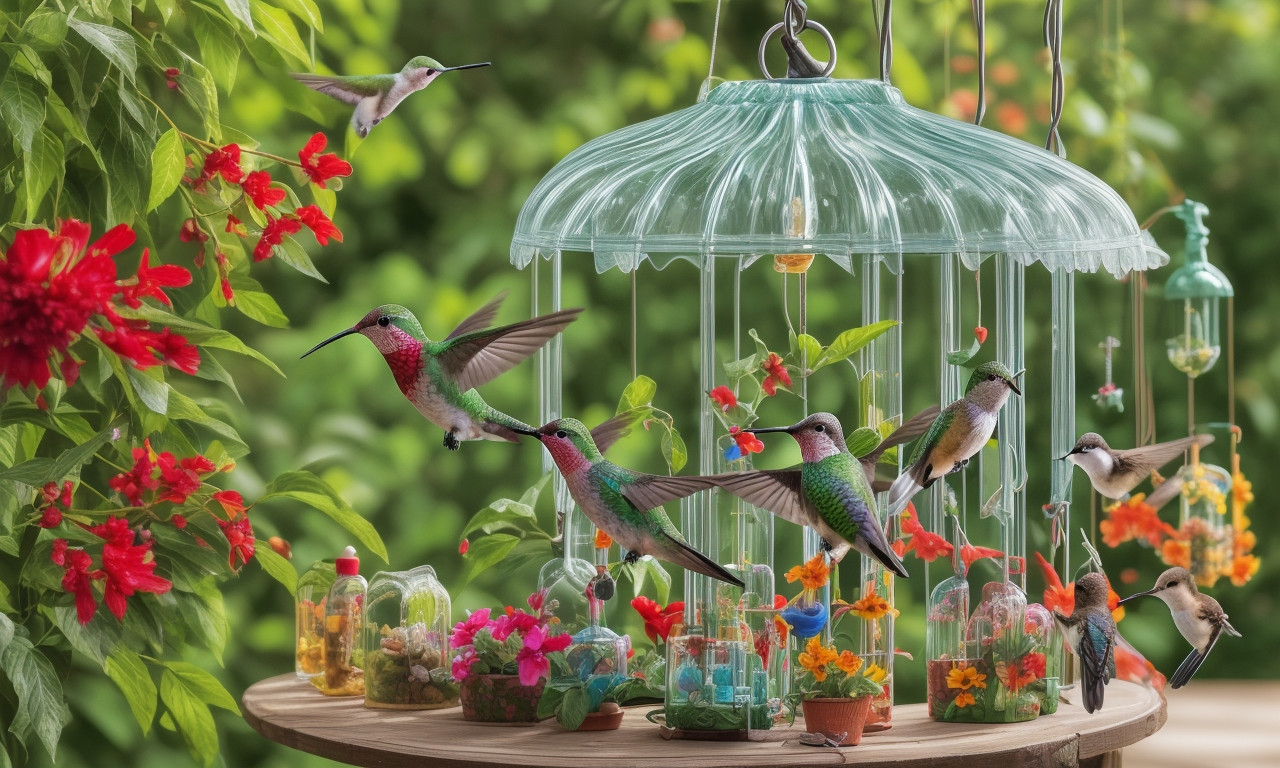
Feeding hummingbirds can be both a delightful and rewarding experience. If you’re new to attracting these tiny jeweled birds, you probably have numerous questions. One common query that often arises is, “When Should I Hang My Hummingbird Feeders?” Understanding the optimal timing is crucial to ensure you’re providing nourishment exactly when these migratory birds need it. Typically, in the United States, it’s advisable to hang your feeders in early spring—around March or April—since this timeframe aligns with the hummingbirds’ migration patterns.
Placing your feeders out early ensures that you cater to those early arrivers. Depending on your location, however, the timing might slightly vary. For example, in southern regions, you might hang them as early as February, while in northern areas, late April might be more appropriate. Beyond merely knowing when to hang your feeders, it is also essential to routinely clean and refill them to maintain a healthy environment. These practices can significantly enhance your experience and success in attracting and nurturing hummingbirds. By following these guidelines, you get to enjoy the captivating view of these iridescent birds flitting around your garden throughout the feeding season.
Where Should I Hang Hummingbird Feeders?

Hummingbirds captivate bird enthusiasts with their vibrant colors and agile flight. Understanding the intricacies of caring for these mesmerizing creatures involves addressing common questions, such as “Where Should I Hang Hummingbird Feeders?” Knowing the appropriate location for your feeder can significantly influence how many hummingbirds visit your garden.
Position your hummingbird feeders in an area that ensures both visibility and safety for the birds. An ideal spot is near flowering plants that naturally attract hummingbirds but also in a location where predators, like cats, can’t easily reach. Hanging feeders in semi-shaded areas protects the nectar from spoiling quickly due to hot sun exposure, which is crucial for maintaining the birds’ health. Additionally, situating the feeder near a window can provide ample viewing opportunities without disturbing the birds.
Another critical aspect is to maintain a distance between feeders to reduce territorial conflicts among hummingbirds. Placing multiple feeders around your garden increases the chances for more hummingbirds to find a peaceful feeding spot. Regularly clean and refill your feeders to prevent mold and fermentation in the nectar.
By thoughtfully addressing the question “Where Should I Hang Hummingbird Feeders?” you ensure a better environment for these delightful birds, enriching your backyard with their vibrant presence.
Are Hummingbirds Territorial at Feeders?
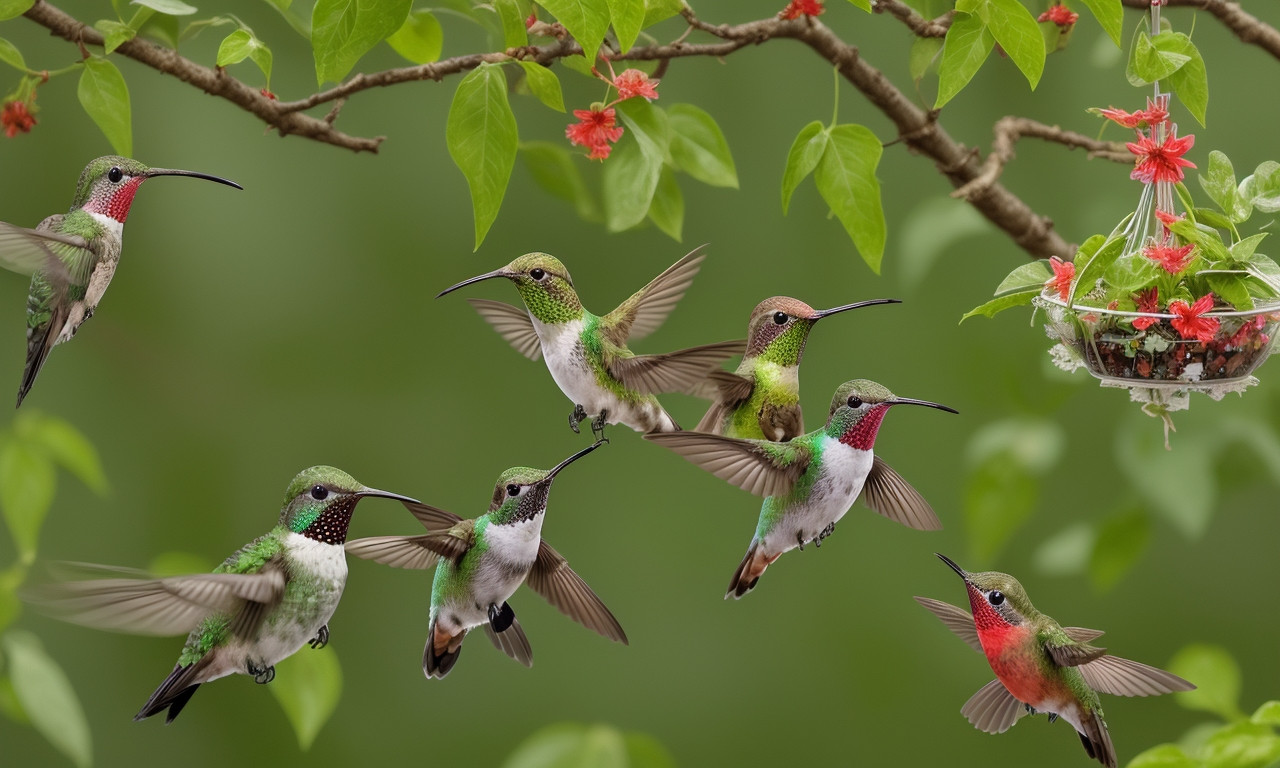
Feeding hummingbirds can bring immense joy to any backyard, but many questions arise about the best practices to ensure these tiny creatures thrive. A common query is, “Are hummingbirds territorial at feeders?” Hummingbirds, particularly males, can indeed exhibit territorial behavior around feeders. This territoriality is a fascinating aspect of their interaction as they aggressively defend their food sources from intruders.
When setting up a feeder, it’s common to observe one hummingbird—all too often a male—chasing others away, seeking to claim the feeder as its own. This behavior helps them conserve energy by minimizing competition, ensuring they have enough nectar. However, this can lead to a single bird monopolizing the feeder, deterring others from visiting.
To mitigate this territorial aggression among hummingbirds, multiple feeders placed at different locations around your garden can be effective. Diversifying feeder sites helps distribute the birds more evenly, reducing aggressive encounters and allowing more hummingbirds to feed peacefully.
Understanding that hummingbirds are territorial at feeders underscores the need for strategic feeder placement and quantity. This ensures a more harmonious feeding environment, allowing enthusiasts to enjoy the vibrant presence of multiple hummingbirds without the drama of territorial disputes. Thus, appreciating their natural habits enhances both the bird-watching experience and the wellbeing of these fascinating creatures.
I’ve Planted a Hummingbird Garden, but Why Don’t They Visit?
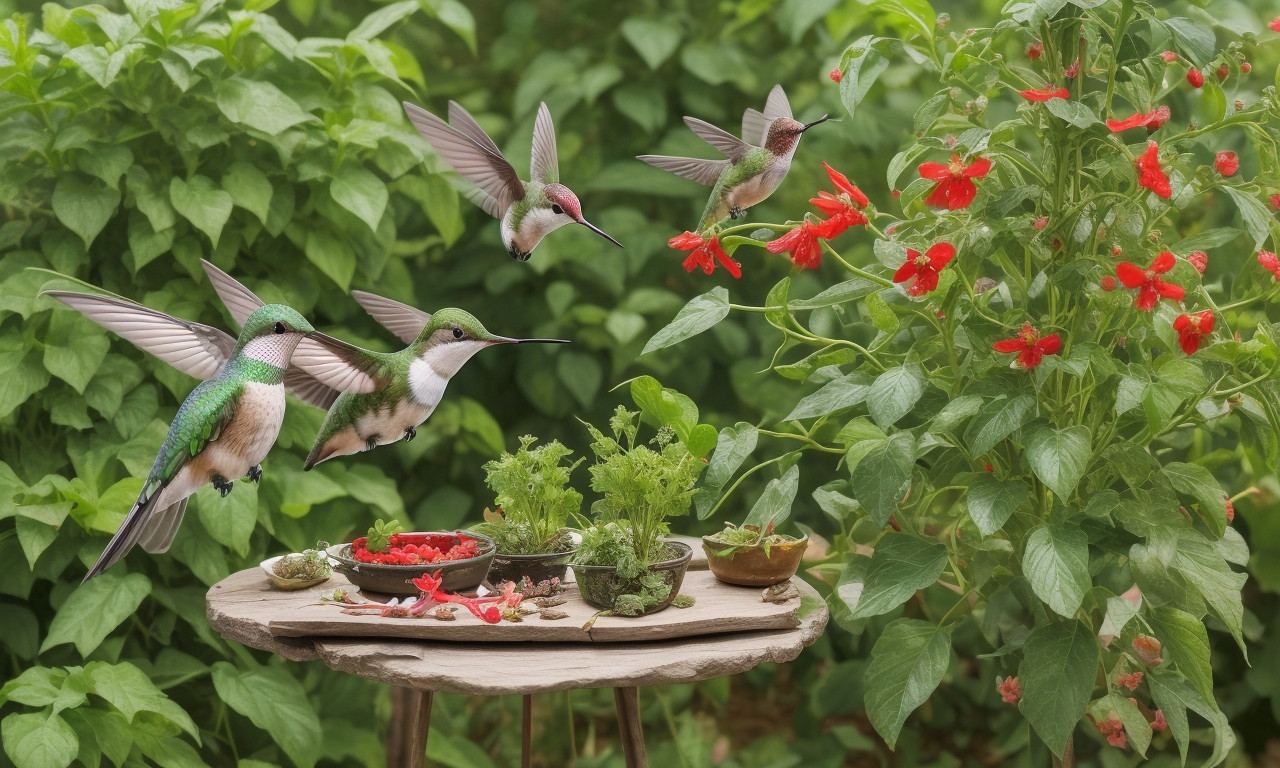
Creating a hummingbird haven in your backyard can be a delightful experience, attracting these tiny, vibrant creatures to your garden. However, even after all your efforts, you might find yourself wondering, “I’ve planted a hummingbird garden, but why don’t they visit?” This guide explores 21 frequently asked questions about feeding hummingbirds, uncovering possible reasons behind their absence.
Firstly, ensure you are using the right plants. Not all flowers are hummingbird favorites. Opt for nectar-rich flowers like trumpet vine, bee balm, and honeysuckle. These plants produce the high-energy food that hummingbirds crave. Also, consider the color red; it’s a known attractant for hummingbirds.
Another crucial factor is the availability of feeders. Sometimes, natural blooms alone aren’t sufficient to lure hummingbirds. Providing well-maintained feeders filled with a proper ratio of sugar water (1 part sugar to 4 parts water) can significantly increase your chances. Regular cleaning is imperative to prevent mold and fermentation, which can deter the birds or even harm them.
Placement matters too. Situate feeders and flowering plants in safe, visible spots away from predators like cats. Creating a diverse, layered garden structure can offer both food and shelter. Reflect on these considerations, and soon you’ll stop asking, “I’ve planted a hummingbird garden, but why don’t they visit?” Instead, you’ll be enjoying the joyful buzz of these enchanting birds.
Is It Better to Plant Flowers for Feeding Hummingbirds?
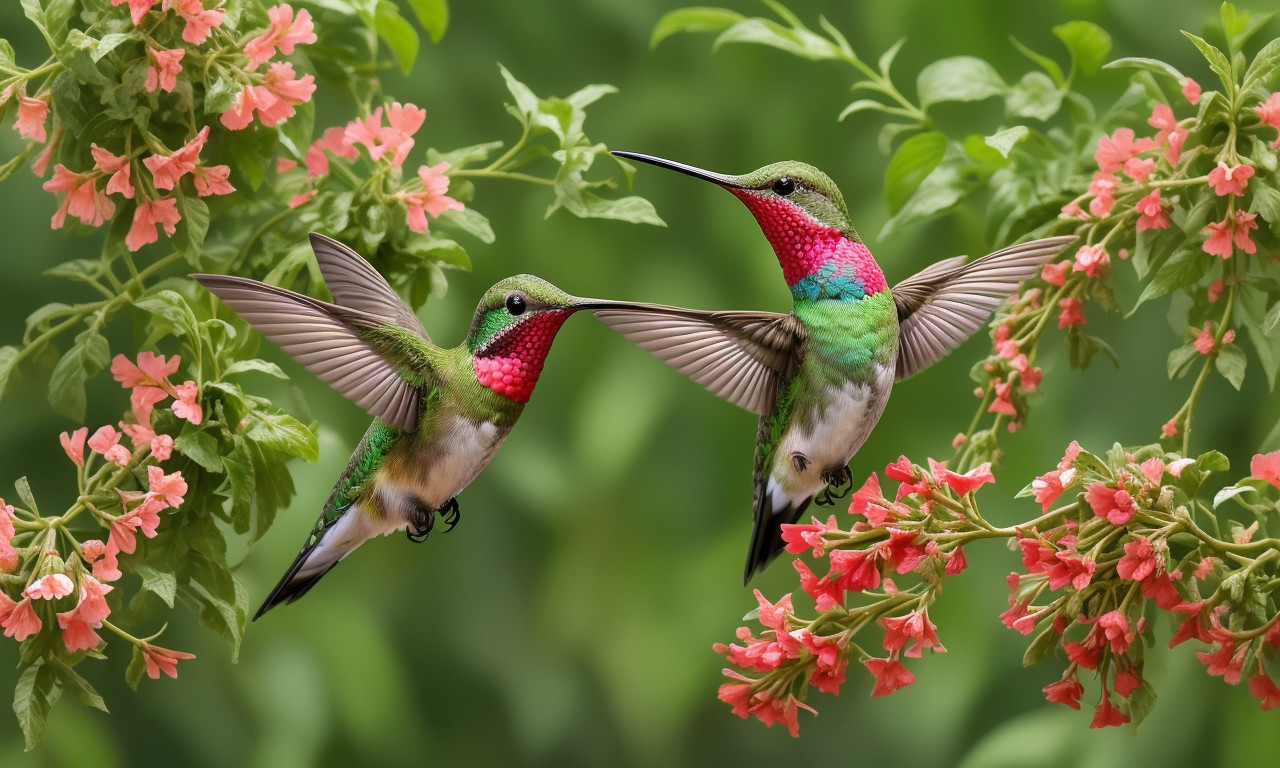
Hummingbirds are fascinating creatures, often sparking curiosity and leading to numerous questions about their care. One common inquiry is, “Is it better to plant flowers for feeding hummingbirds?” The answer is a resounding yes. Natural nectar sources provide the essential nutrients and energy these tiny birds need for migration and daily activities. Flowers like trumpet vine, bee balm, and salvia are excellent choices due to their tubular shapes and vibrant colors, which are particularly attractive to hummingbirds.
In addition to offering a healthier diet, planting flowers creates a sustainable environment that benefits other pollinators. Unlike artificial feeders, flowers do not require regular maintenance and eliminating the risk of mold or harmful bacteria. Moreover, a garden full of diverse blooms can support a variety of hummingbird species throughout the season, ensuring that these birds return year after year.
While feeders can serve as a supplemental food source, especially during peak migration periods, they should not replace the natural option. Planting flowers helps to establish a rich, supportive ecosystem. So, when considering feeding hummingbirds, turning your garden into a blooming haven is undoubtedly the better choice, answering one of the 21 frequently asked questions with a straightforward and nature-friendly solution.
Will Hummingbirds Become Dependent on Feeders?
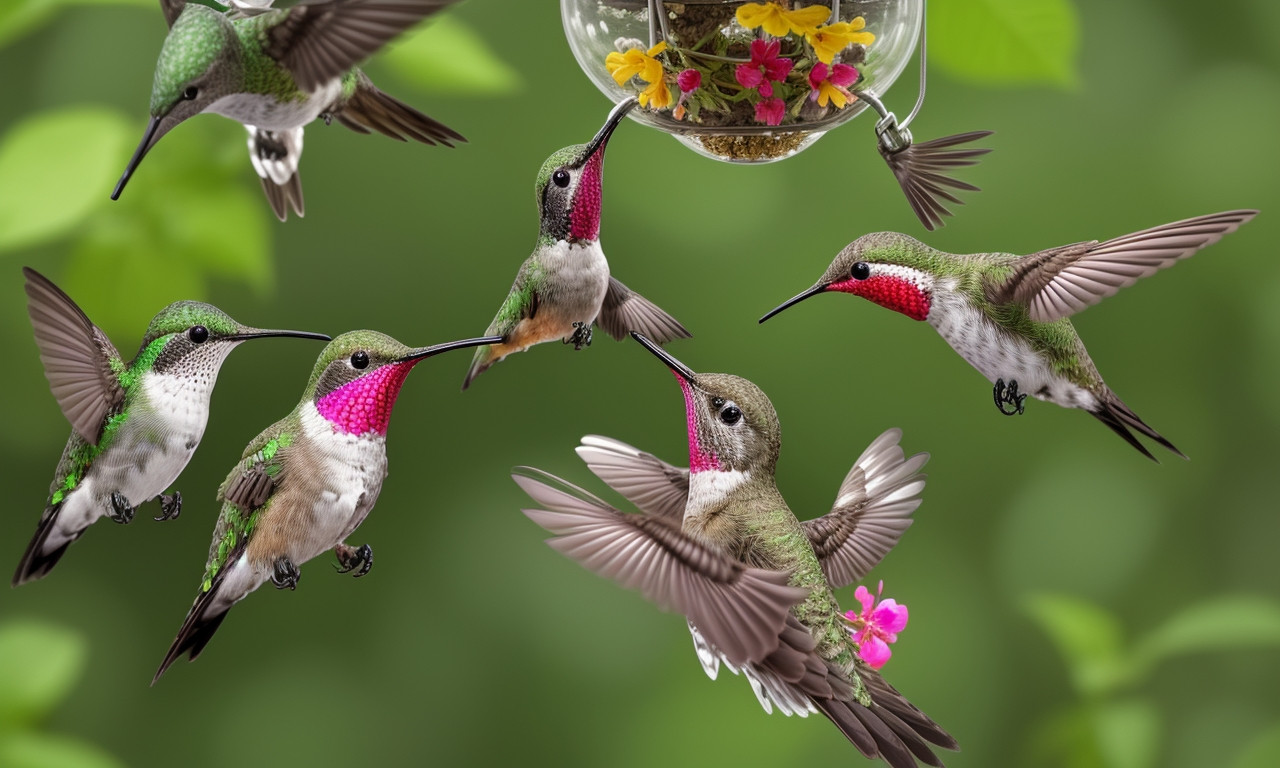
Curious about the ins and outs of feeding hummingbirds? Look no further than our comprehensive guide: “21 Frequently Asked Questions About Feeding Hummingbirds Explained and Answered.” One pressing query readers often have is: “Will hummingbirds become dependent on feeders?” The concise answer is no. While feeders offer an easy source of nourishment, hummingbirds naturally rely on a variety of food sources like nectar from flowers, small insects, and spiders. Feeders merely supplement their diet, especially beneficial during migration or when natural food sources are scarce.
The guide dives deeper into how to maintain feeders, ensuring the nectar stays fresh and safe for consumption. Cleanliness is critical since contaminated feeders may cause illness. Whether you’re a novice or an experienced birder, understanding the balance between feeders and natural foraging will enrich your hummingbird-watching experience. Additional questions covered include the ideal placement of feeders, the best type of nectar, and how to attract these delightful birds to your garden. By following the expert advice in “21 Frequently Asked Questions About Feeding Hummingbirds Explained and Answered,” you’ll ensure a healthy, vibrant environment for these enchanting creatures without fostering dependency on artificial feeding stations.
How Can I Keep Yellow Jackets Off Hummingbird Feeders?
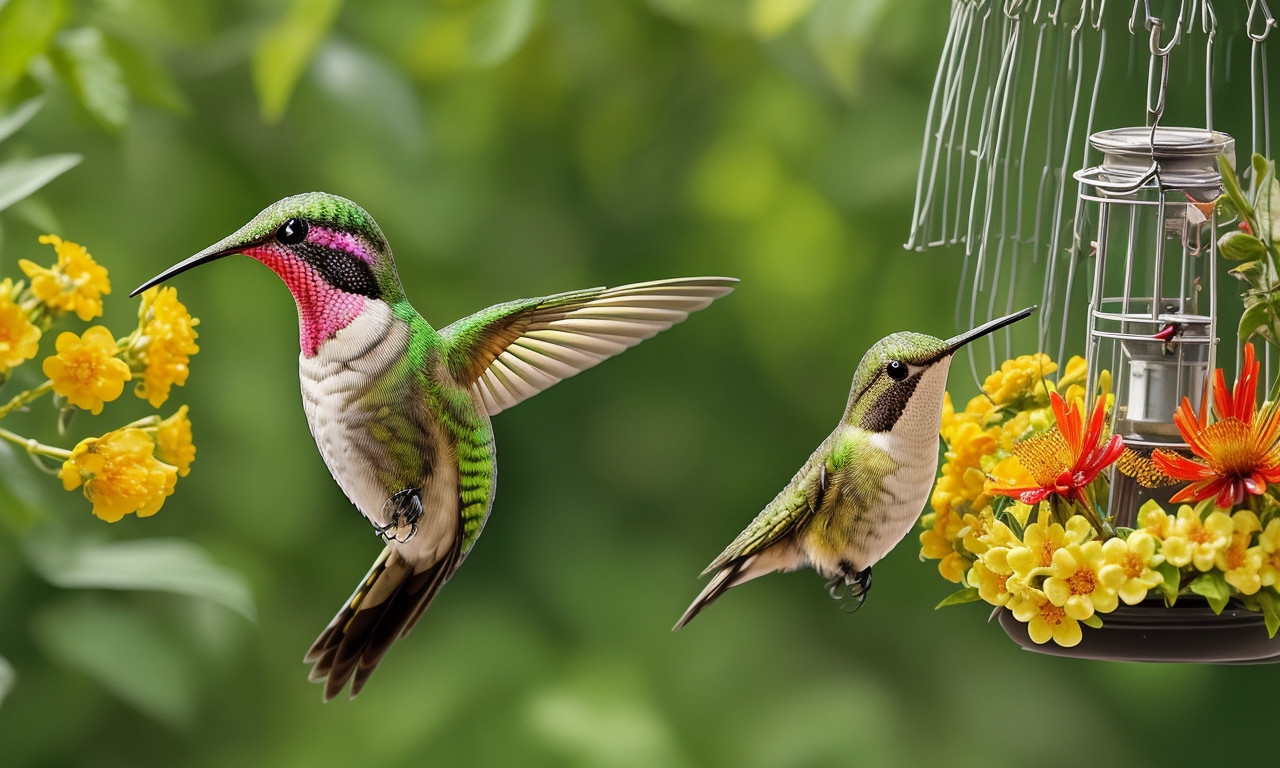
Delve into the fascinating world of hummingbird care with our comprehensive guide, “21 Frequently Asked Questions About Feeding Hummingbirds Explained and Answered.” One crucial aspect often queried by enthusiasts is, “How Can I Keep Yellow Jackets Off Hummingbird Feeders?” These persistent pests can become a significant nuisance, not just to the tiny birds but also to the caretakers who adore them.
Understanding how to manage yellow jackets while catering to hummingbirds’ needs involves a few strategic steps. Firstly, place feeders away from flowers and bright colors that attract these insects. Opt for feeders with built-in bee guards or those featuring nectar ports designed to be inaccessible to these intruders. Regular maintenance, including keeping the feeder clean and free of spills, can also deter yellow jackets from lingering around.
Moreover, using a weaker sugar solution can be a viable deterrent. Yellow jackets prefer a higher sugar content, so a ratio of 1-part sugar to 5-parts water might dissuade them without alarming the hummingbirds. If an infestation persists, relocating the feeder temporarily or using decoy traps placed at a distance can be effective.
In our deeper exploration, every question is tackled with detailed answers, ensuring your hummingbird feeding experience remains delightful and uninterrupted by unwelcome guests.
Do Bees Make Hummingbird Feeders Dirtier?
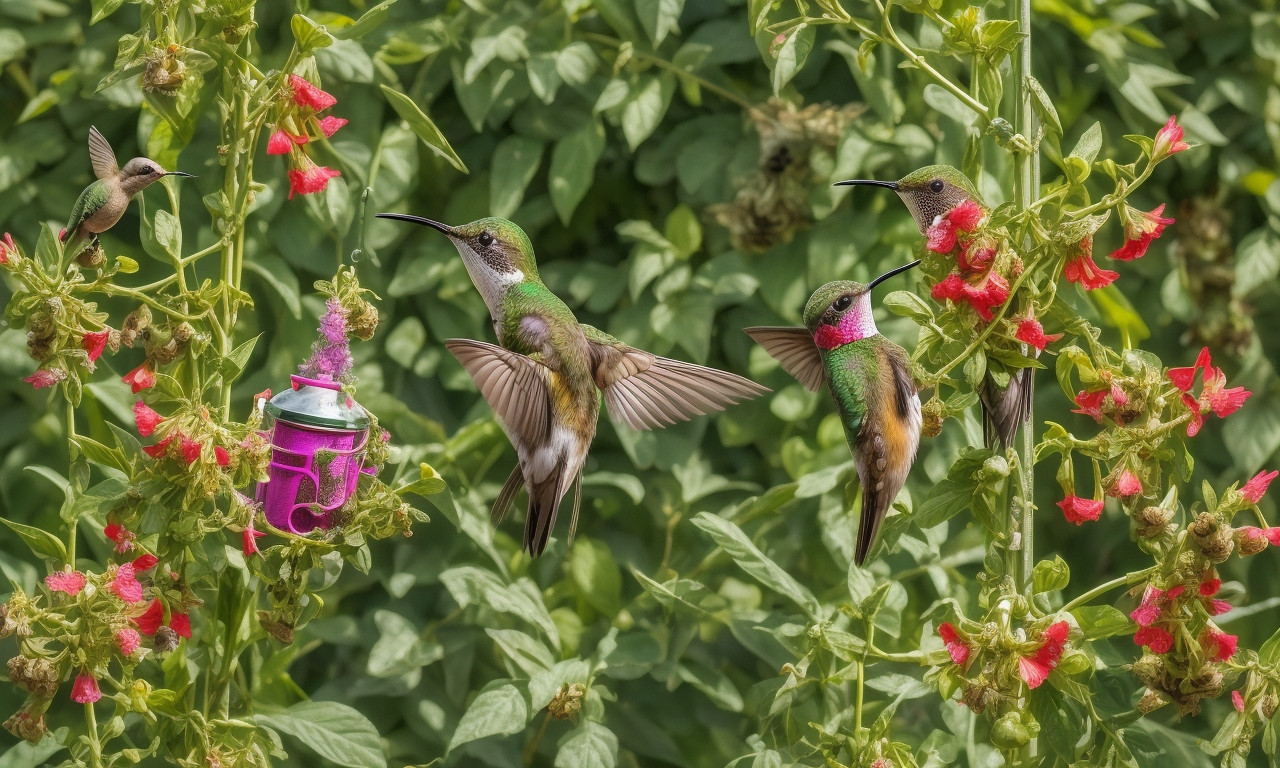
Discover everything you need to know about feeding hummingbirds in our comprehensive guide, “21 Frequently Asked Questions About Feeding Hummingbirds Explained and Answered.” This informative resource covers various aspects, from choosing the right feeders to understanding the dietary preferences of these delicate birds. An essential topic we address is the question, “Do bees make hummingbird feeders dirtier?” The presence of bees and other insects can indeed impact the cleanliness of your feeders. Bees are attracted to the same sugary nectar that appeals to hummingbirds, often resulting in a shared feeding environment. Consequently, they can introduce dirt and debris or contribute to mold growth if the feeders aren’t cleaned regularly.
Our guide offers practical advice on mitigating this issue, such as placing bee guards on the feeders or opting for feeders specifically designed to minimize insect access. It also provides tips on the optimal frequency for cleaning feeders to maintain a healthy feeding station for hummingbirds. By following our expert recommendations, you can ensure that your hummingbird feeders remain inviting and safe for these enchanting creatures while reducing the impact of bees and other unwanted visitors. Dive into our FAQ section for more detailed answers and become a pro at feeding hummingbirds in no time!
How Do Hummingbirds Feed Their Babies?

Understanding the intricacies of feeding hummingbirds often involves addressing common queries, with one of the most intriguing questions being, “How do hummingbirds feed their babies?” When baby hummingbirds hatch, they are completely dependent on their parents for nourishment. The mother hummingbird plays a pivotal role in this stage. She feeds her hatchlings by regurgitating ingested food—typically a combination of nectar, small insects, and spiders—directly into their mouths. During the initial days, the mother’s specialized feeding technique ensures the chicks receive essential nutrients for growth and development.
The feeding process is meticulous and occurs frequently throughout the day, given the high metabolism and rapid growth rate of young hummingbirds. Observing this natural phenomenon, one can appreciate the dedication and energy involved in the care of these delicate creatures. While feeding hummingbirds in your garden, it’s beneficial to understand their lifecycle and feeding habits.
Recognizing that hummingbird feeders and nectar sources play a significant role in their sustenance, especially during migration and breeding seasons, helps in providing adequate support for both adult birds and their fledglings. By addressing common questions, like “How do hummingbirds feed their babies?”, enthusiasts gain a comprehensive outlook on nurturing these enchanting creatures effectively.
How Do Hummingbirds Drink Nectar?
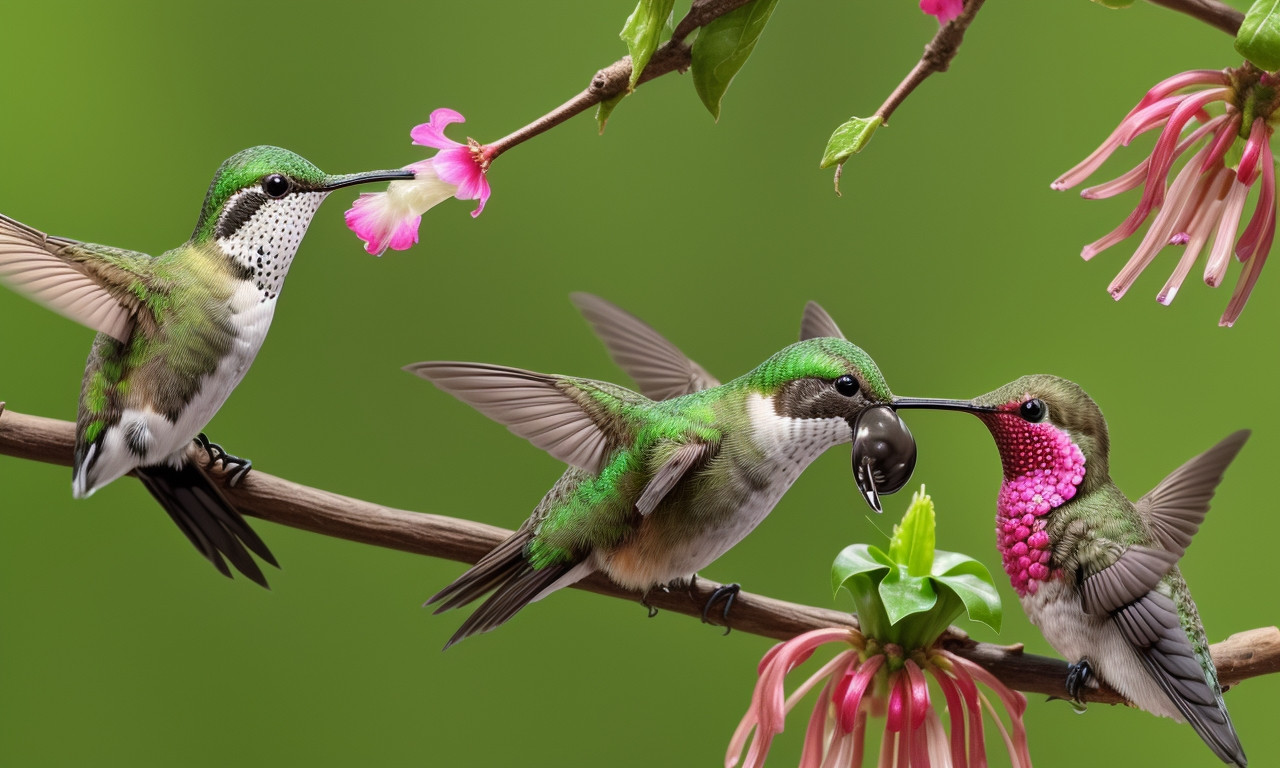
Hummingbirds are fascinating creatures, and understanding their feeding habits can greatly enhance your experience as a bird enthusiast. Among the most pressing inquiries in this domain is, “How do hummingbirds drink nectar?” To demystify this, let’s delve into the 21 frequently asked questions about feeding hummingbirds.
First and foremost, the primary method hummingbirds use to drink nectar involves their specialized tongues. These agile fliers have tongues that work like tiny pumps, extending rapidly to lap up the nectar from flowers or feeders. The tongue is bifurcated, forming two grooves that trap the liquid through capillary action, ensuring every drop is utilized. This intricate mechanism underscores the efficiency and elegance of these birds.
When considering what to feed them, it’s essential to mimic their natural diet as closely as possible. Use a homemade nectar solution made of four parts water to one part sugar, boiling it to dissolve the sugar and then cooling it before serving. Avoid any food coloring or honey, as these can be harmful to the birds.
Additionally, placement and maintenance of feeders are crucial. Position feeders in shaded areas to prevent spoilage and clean them regularly to avoid mold buildup. Understanding these aspects will not only attract hummingbirds to your garden but also ensure they stay healthy and vibrant.
By exploring these commonly asked questions, bird enthusiasts can create a welcoming and nourishing environment for these mesmerizing avian visitors.
I Saw a Yellowish Hummingbird at My Feeder. Is This Common?
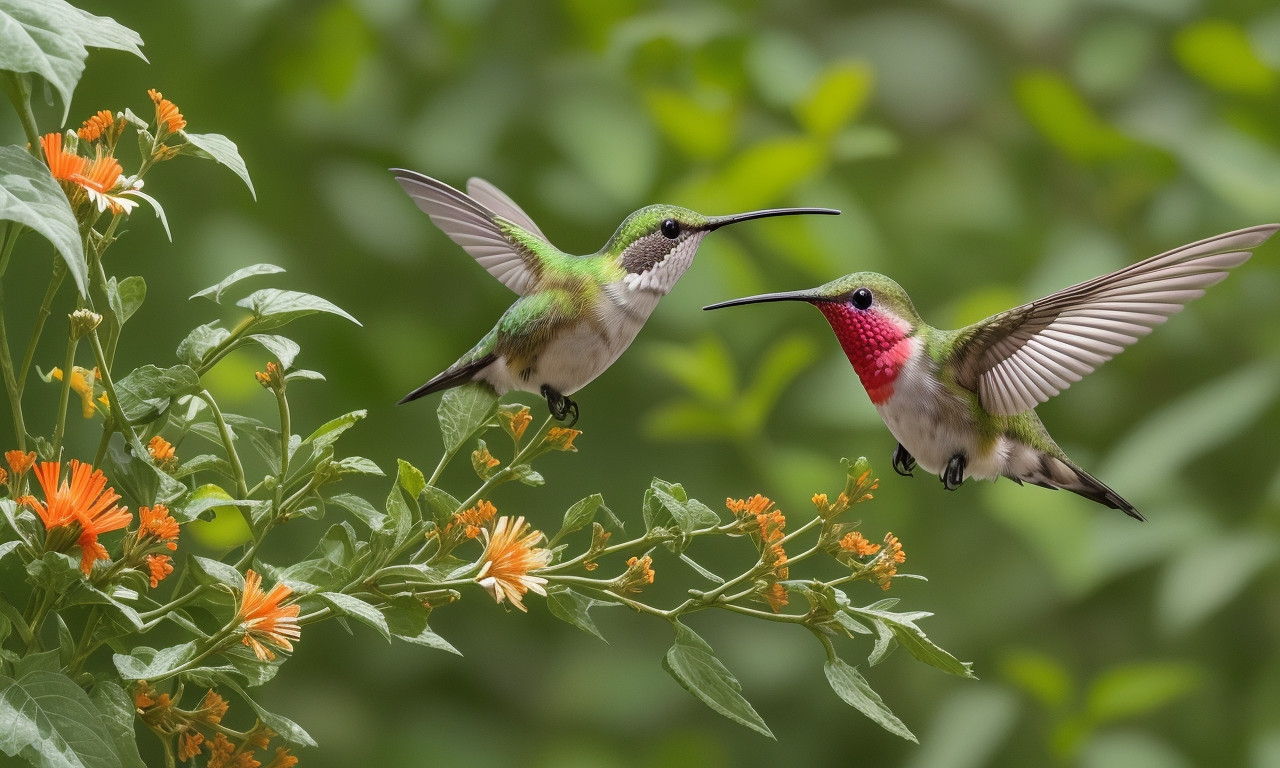
Observing hummingbirds is a delightful activity enjoyed by many, but it’s natural to have questions, such as, “I saw a yellowish hummingbird at my feeder. Is this common?” In the comprehensive guide “21 Frequently Asked Questions About Feeding Hummingbirds Explained and Answered,” such curiosities are addressed in detail. Yellowish hummingbirds can be common, particularly in certain regions and during specific seasons. These appearances might be due to natural variations in plumage, the presence of pollen or nectar stains, or even juvenile birds displaying different colors than adults.
This guide delves into various elements related to hummingbird feeding, including ideal feeder placement, types of nectar to use, seasonal behaviors, and the best times to refill feeders. It also tackles issues like keeping feeders clean to prevent disease and how to discourage unwanted guests like ants and bees. With informative insights about the lifecycles, feeding habits, and migratory patterns of these fascinating birds, the guide helps enthusiasts better understand and appreciate hummingbird behavior. Whether it’s identifying unusual color variations or optimizing feeder setups, this guide ensures that your hummingbird-feeding experience is both rewarding and educational, answering even the most niche questions thoroughly.
Why Do Hummingbirds Hang Upside-Down From Feeders?
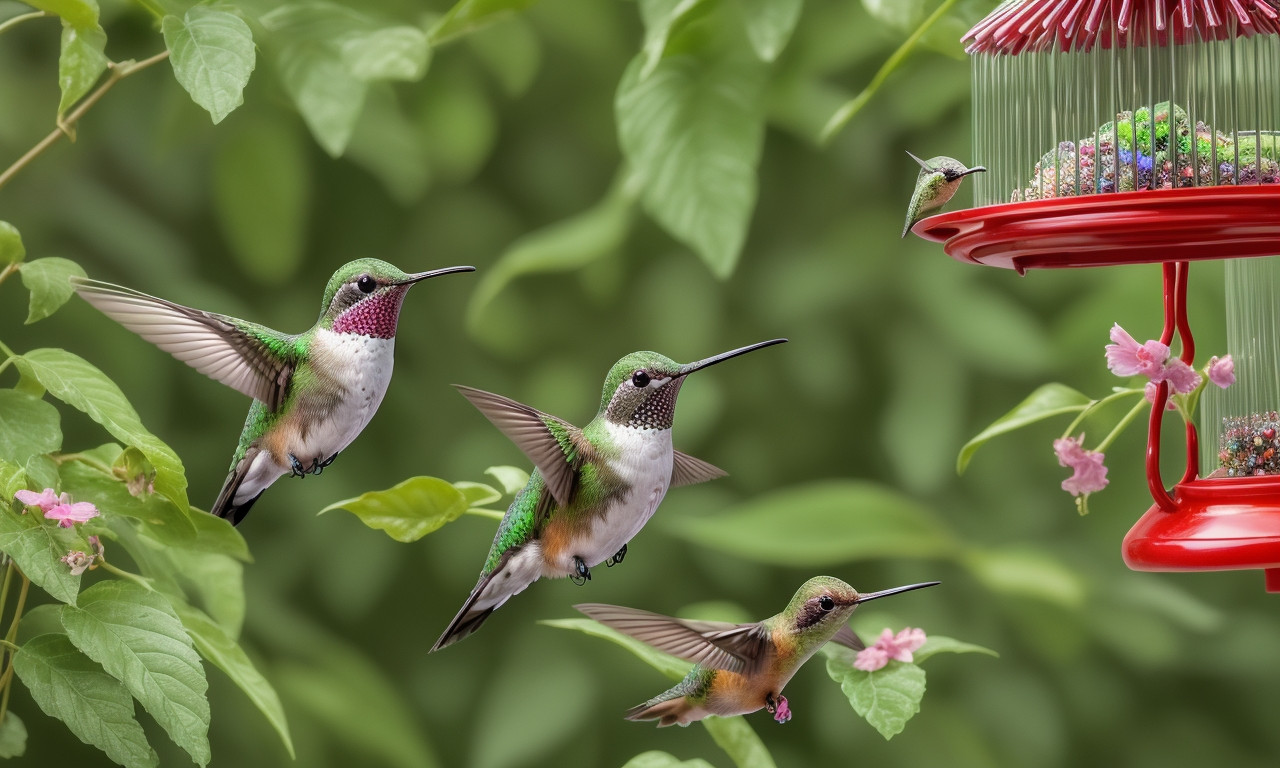
Understanding the intricacies of feeding hummingbirds can be both fascinating and rewarding. Among the most intriguing behaviors observed is, “Why Do Hummingbirds Hang Upside-Down From Feeders?” This question often arises because it seems unusual at first glance. Hummingbirds hang upside-down from feeders primarily for feeding flexibility and protection. Their unique physiology allows them to hover and feed from various angles. When a hummingbird hangs upside-down, it can access hard-to-reach nectar more efficiently. Additionally, this position may help them spot predators while feeding. It’s important to remember that these tiny birds are always on the lookout for potential threats, and their agility is a crucial survival trait.
Moreover, many feeders are designed to simulate the natural feeding positions that hummingbirds assume when they extract nectar from flowers. Hummingbirds are naturally attracted to feeders that resemble their natural environment. Providing a steady supply of fresh nectar and ensuring that feeders are clean and safe will encourage these beautiful birds to frequent your garden, even if it means they sometimes assume unusual positions. Through careful observation and learning, enthusiasts can foster a welcoming environment for hummingbirds, making the sight of them hanging upside-down an ordinary, yet extraordinary, part of their bird-watching experience.
Why Do I Never See Male Hummingbirds at My Feeders?
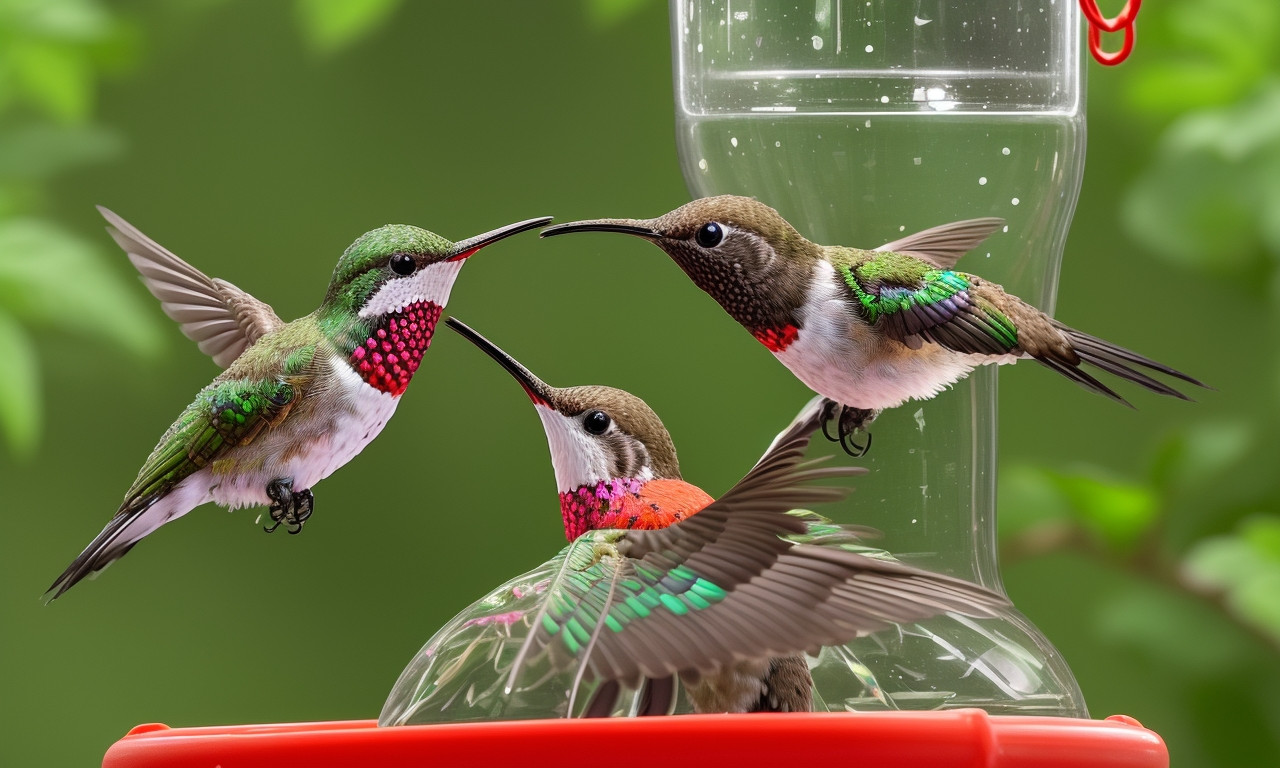
When it comes to feeding hummingbirds, there are numerous queries enthusiasts often have. Among the 21 frequently asked questions, the concern, “Why Do I Never See Male Hummingbirds at My Feeders?” stands out prominently. Male hummingbirds are known for their vibrant colors and territorial behavior. They often avoid feeders during the peak of the breeding season as they are busy defending their territory and courting females. Consequently, you may spot more female hummingbirds visiting your feeders, seeking nourishment for themselves and possibly their young.
Another reason you might not observe male hummingbirds at your feeders is due to their unique feeding preferences. Males typically prefer flowers where they can maintain vigilance and dominance, ensuring their access while watching for rivals. Furthermore, feeder placement and nectar quality also play crucial roles in attracting male hummingbirds. Ensuring the feeder is in a safe, visible location with fresh nectar can increase male sightings.
Understanding these aspects not only answers the query but also sheds light on other facets of hummingbird behavior, providing a comprehensive guide for those keen on fostering a hummingbird-friendly environment. This discussion contributes significantly to the broader topic of feeding hummingbirds by enhancing the feeding experience through informed practices.
How Can I Help Hummingbirds Fuel Up for Migration?
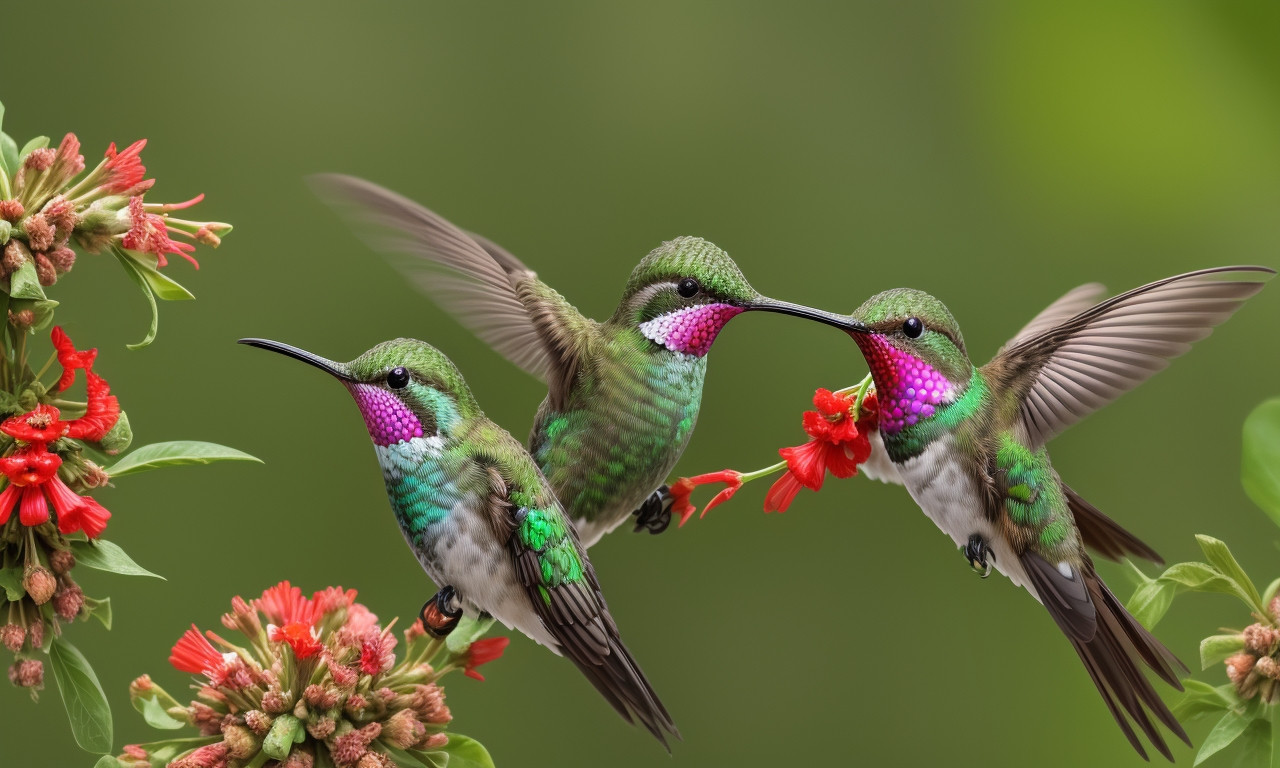
Feeding hummingbirds is a rewarding endeavor, especially during migration season when these tiny birds need extra energy to fuel their long journeys. How can I help hummingbirds fuel up for migration? This is a common question, and understanding their needs can greatly enhance your efforts.
Firstly, providing the right nectar mixture is crucial. A simple recipe of four parts water to one part white granulated sugar, boiled to ensure it’s safe, mimics the natural nectar found in flowers. Avoid commercial mixes and artificial dyes as they can be harmful.
Placing feeders in your yard is another effective strategy. Position them in accessible, shaded areas to prevent fermentation of the nectar. Multiple feeders can reduce territorial disputes, allowing more birds to dine simultaneously.
Besides feeders, planting native flowering plants like trumpet vine or bee balm can offer a natural nectar source, further helping hummingbirds fuel up for migration. Maintaining your feeders by cleaning them regularly with hot water prevents growth of harmful mold and bacteria, ensuring a healthy supply of nectar.
Lastly, consider timing and availability. Keep feeders up until a few weeks after you’ve last seen hummingbirds to assist late migrators. By taking these steps, you’re not just feeding hummingbirds; you’re playing a pivotal role in their successful migration.
Why Do Finches Visit Hummingbird Feeders?
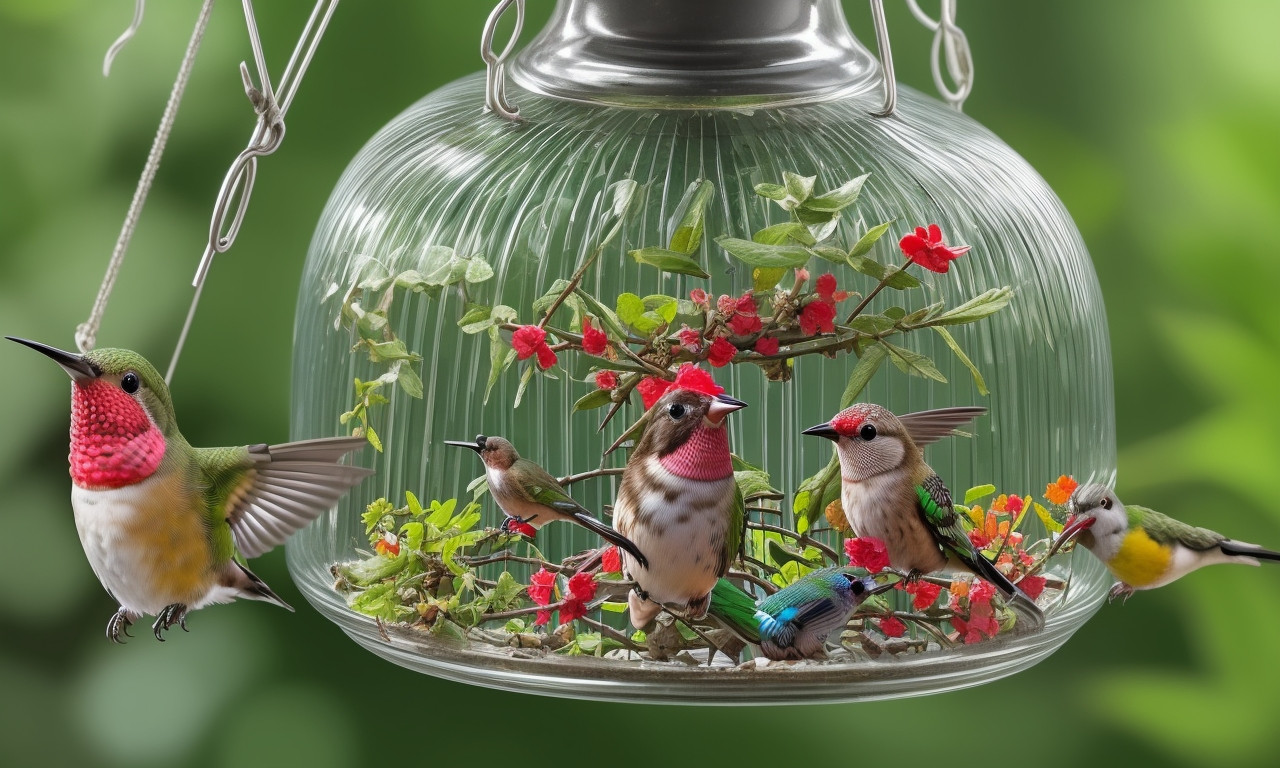
Introducing a comprehensive guide, “21 Frequently Asked Questions About Feeding Hummingbirds Explained and Answered,” that delves deep into the enchanting world of these tiny, iridescent birds. This guide provides insightful answers to common queries about feeding hummingbirds, ensuring enthusiasts can attract and nurture these dazzling creatures in their own gardens. From selecting the right feeder to preparing the perfect nectar, every question is addressed with expert recommendations and practical tips.
One intriguing point covered in the guide is: Why do finches visit hummingbird feeders? Finches are often drawn to hummingbird feeders due to the sweet nectar, which provides a quick energy boost, similar to the benefits for hummingbirds. While finches primarily consume seeds, their occasional curiosity about the sugary solution can lead them to sip from the feeders, especially when other food sources are scarce.
Additionally, the guide sheds light on the best practices to deter unexpected visitors, such as finches, from monopolizing the feeders meant for hummingbirds. Employing specific feeder designs and placement strategies can minimize their interference while still accommodating the energetic hummingbirds.
By exploring these frequently asked questions, bird lovers will gain the knowledge needed to create a harmonious environment tailored to the specific needs of hummingbirds, ensuring a delightful and mutually beneficial experience.
How Can I Keep Orioles Away from Hummingbird Feeders?

Hummingbirds are captivating creatures, and many people enjoy attracting them with feeders. However, a common issue arises: How can I keep Orioles away from hummingbird feeders? Orioles are notorious for dominating hummingbird feeders, often scaring away the smaller birds. To address this problem, it’s important to first understand the feeding habits of both species. Orioles prefer larger perches and feeding ports, while hummingbirds thrive on smaller ones.
To keep Orioles away, consider using feeders designed specifically for hummingbirds. These feeders generally have smaller ports that prevent Orioles from accessing the nectar. Additionally, place oriole feeders filled with their preferred treats—such as oranges or grape jelly—far away from the hummingbird feeders. This tactic will draw the orioles to a different location in your garden.
Installing hummingbird feeders with bee guards can also be effective, as these guards deter both bees and larger birds. Regularly check and refill feeders to ensure they are well-maintained, which can help encourage hummingbirds to return despite the presence of Orioles.
By understanding and addressing the unique feeding habits of each bird, you can maintain a peaceful, coexisting environment in your backyard that ensures hummingbirds flourish while keeping Orioles at bay.
Why Trust Us
When it comes to feeding hummingbirds, there are numerous aspects to consider, leading to a multitude of questions from enthusiasts and bird lovers alike. “21 Frequently Asked Questions About Feeding Hummingbirds Explained and Answered” serves as a comprehensive guide to addressing these queries. Covering everything from the ideal types of feeders to use, the best nectar recipes, and strategies to keep ants and bees at bay, this guide ensures that every query is met with well-researched, enriching information.
Why Trust Us? Our expertise in ornithology and our dedication to feeding practices stem from years of avid bird-watching and consulting with experts. We compile data from reliable sources, scientific research, and firsthand experiences to provide accurate, actionable advice. Whether you’re curious about the nutritional needs of these tiny flyers or the best placement for your feeder to maximize visitation, our answers are structured to clear doubts and offer practical solutions.
Additionally, we address common misconceptions and provide pro tips to enhance your feeding setup, all while ensuring the health and happiness of these fascinating creatures. Our commitment to delivering trustworthy information makes our guide an invaluable resource for anyone eager to master the art of feeding hummingbirds.

